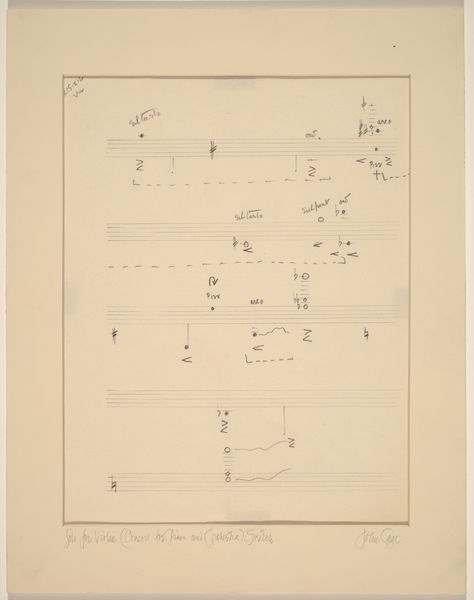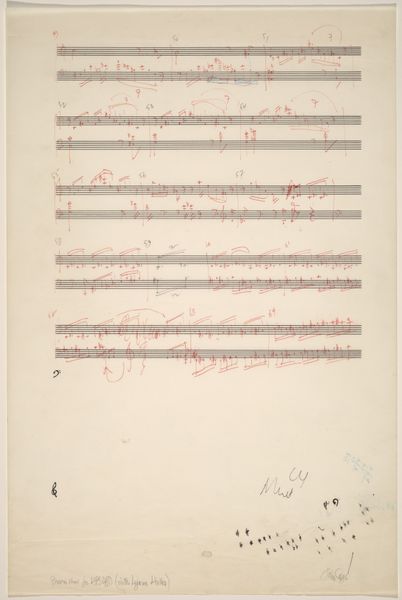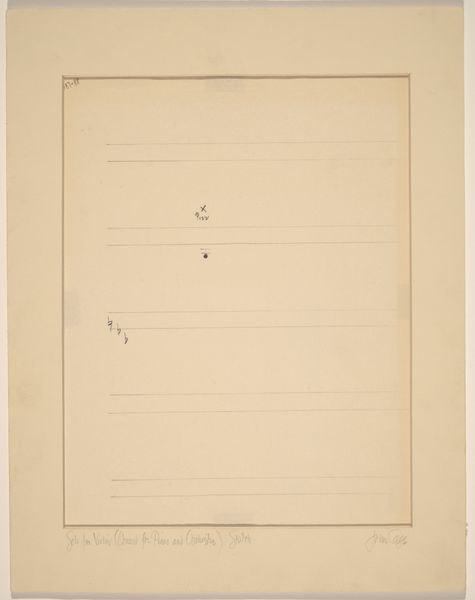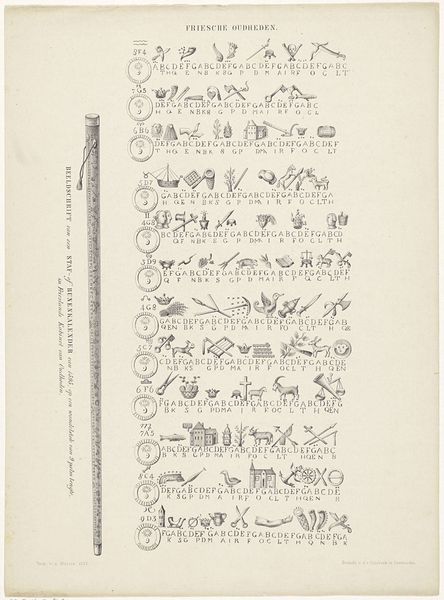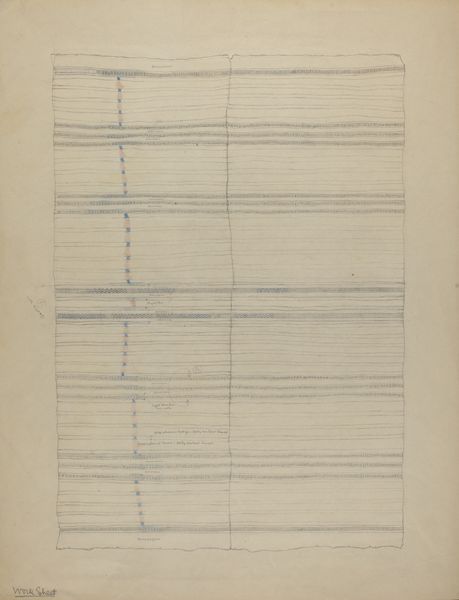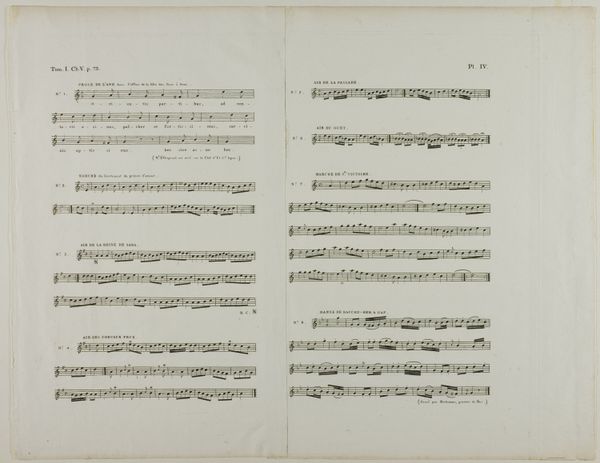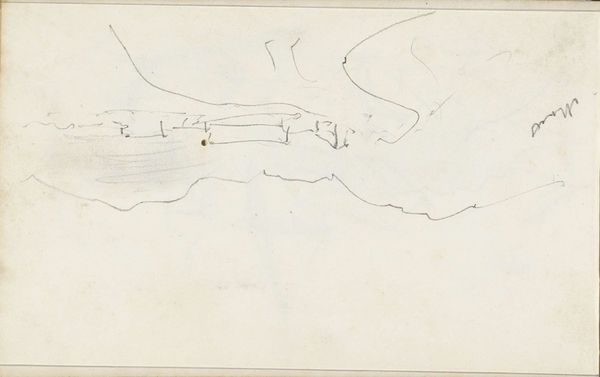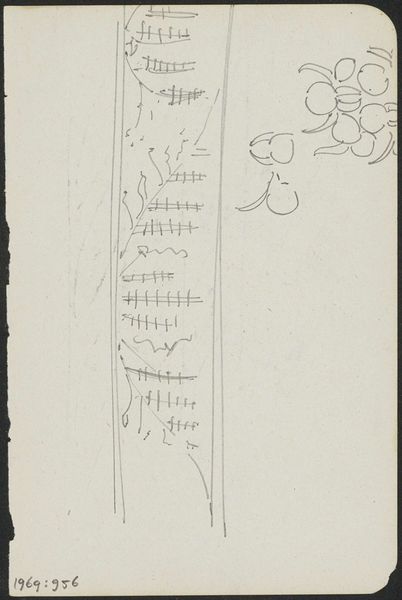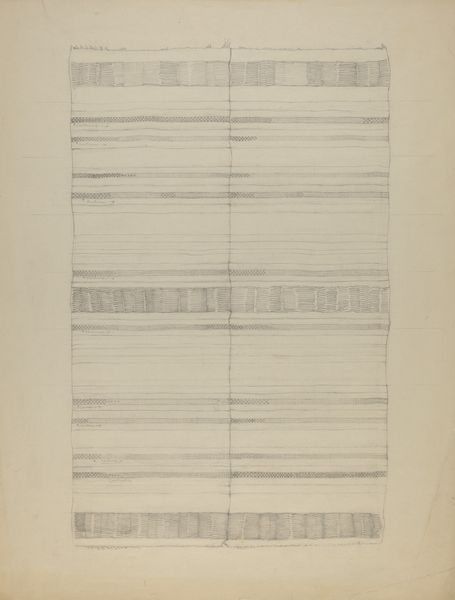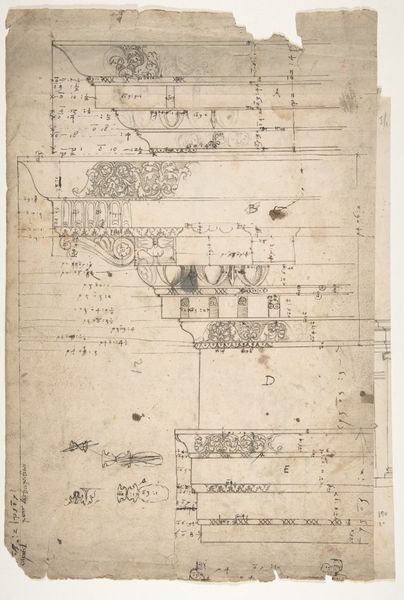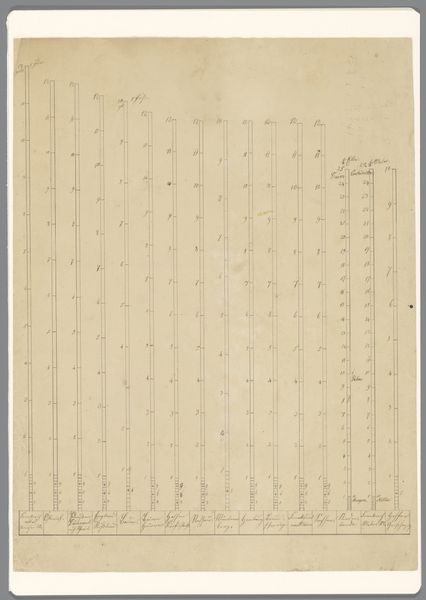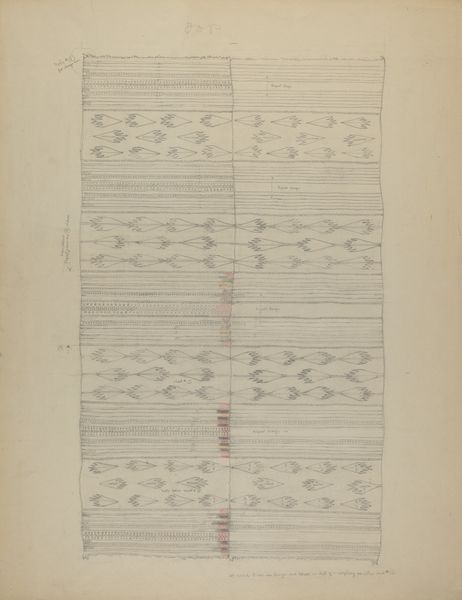
Solo for Flute (Concert for Piano and Orchestra): Sketch 1957 - 1958
0:00
0:00
#
black-mountain-college
Dimensions: sheet: 28 x 21.6 cm (11 x 8 1/2 in.) mount: 35.6 x 27.9 cm (14 x 11 in.)
Copyright: National Gallery of Art: CC0 1.0
Curator: Looking at this work by John Cage, "Solo for Flute (Concert for Piano and Orchestra): Sketch," made between 1957 and 1958, the first thing that strikes me is the apparent randomness, a kind of organized chaos. Editor: Exactly. It gives the impression of a flurry of creative material: ink on paper, almost like capturing ephemeral ideas. There's a tension here between precision and improvisation inherent in Cage's work, I think. What do you find particularly compelling about his process? Curator: For Cage, materials weren't precious, nor was the finalized product above all. This sketch gives us access to Cage's working methods. You can observe what seem to be chance operations being applied directly onto the musical score. Notes, numbers, annotations all intertwine; the labor becomes visible. He is decentering conventional notions of artistic composition through the demystification of labor and materials. Editor: Absolutely. The role of chance and indeterminacy are really central to his broader historical significance, and to mid-century cultural anxieties surrounding control and order after the war. The messiness, which I appreciate, also reflects that era's larger disruption of tradition in musical and artistic contexts. Curator: I’d push back slightly and add, I don’t see it just as a reaction, but as an active deconstruction. Consider the paper quality. It is probably a relatively inexpensive material to produce serial music. By not fetishizing these materials, Cage highlights music production and democratizes access, almost encouraging anyone to engage in the process. Editor: A very relevant point about inclusivity! Cage aimed to dissolve barriers and create accessibility, so this approach makes sense in his social vision, and its broader reception in countercultural circles from the 1960s on. How does the musical notation itself factor into your thinking? Curator: The traditional form offers both structure and something to disrupt, offering viewers ways to perceive the role that material reality played for him. It’s a crucial dialogue in this sketch. Editor: Indeed, understanding Cage involves more than the final artwork, and this sketch does allow a glimpse into the complexities and considerations behind the art. It reminds us how profoundly artwork both influence, and are influenced by, socio-historical moments.
Comments
No comments
Be the first to comment and join the conversation on the ultimate creative platform.
